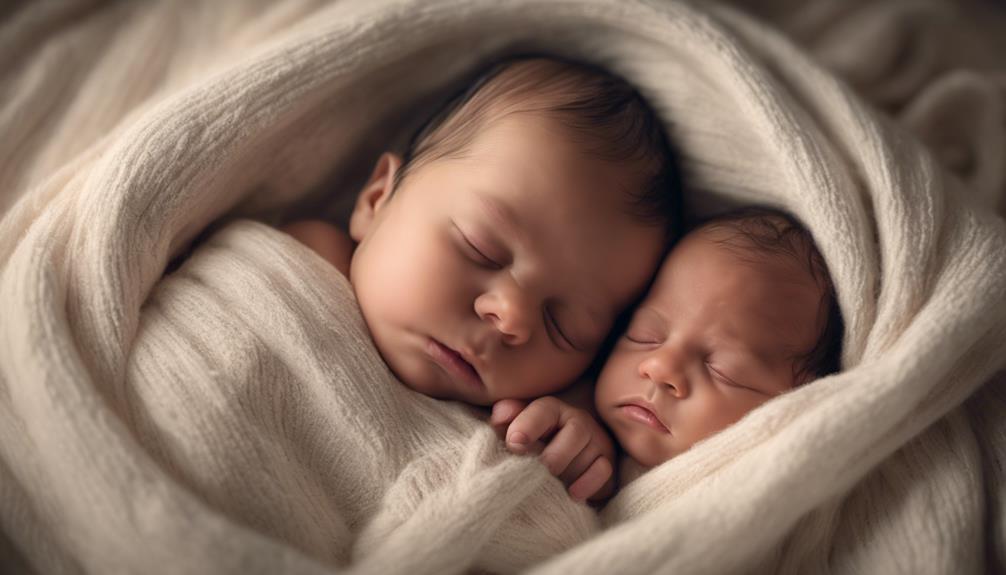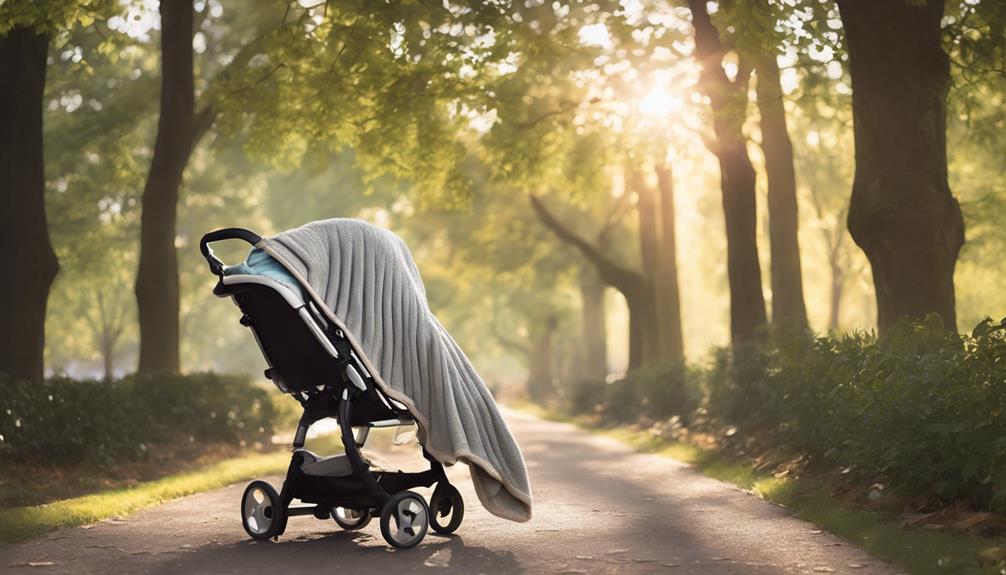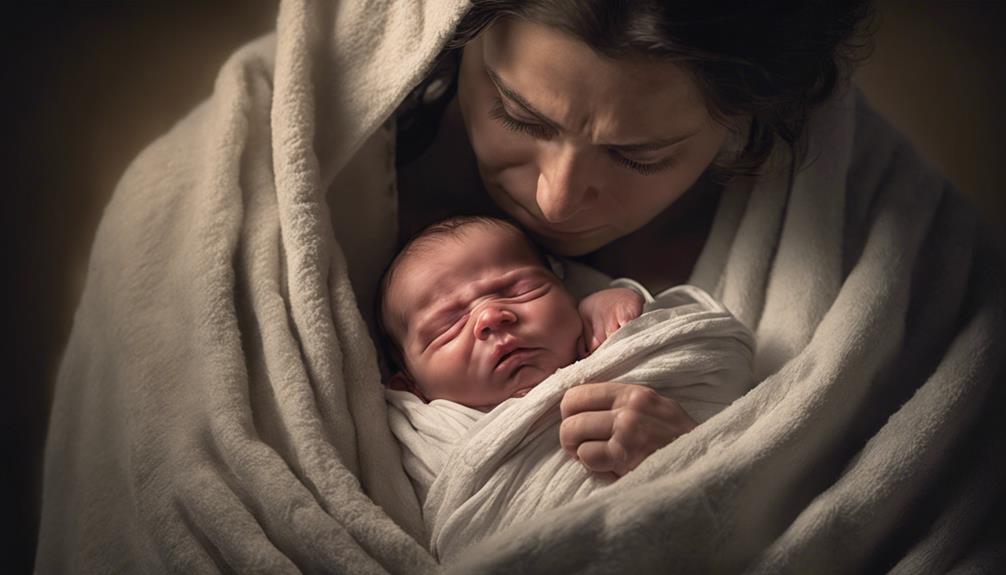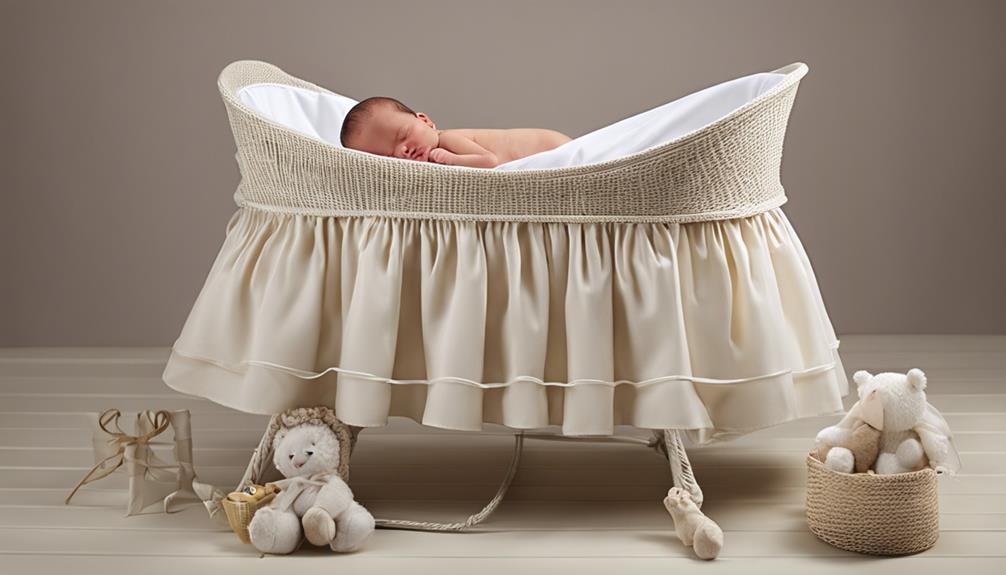So, you've welcomed your little one into the world, and now you're wondering about the safest way to let your newborn sleep on your chest.
It's a heartwarming experience, but there are important considerations to guarantee your baby's safety during these precious moments.
Remember, while this bonding time is invaluable, we need to address certain practices and precautions to make it as safe as it is special.
Key Takeaways
- Ensure proper head positioning and monitoring for easy breathing.
- Avoid falling asleep with the baby on your chest.
- Foster skin-to-skin contact with regular monitoring.
- Consult a pediatrician for personalized safety recommendations.
Safety Guidelines for Chest Sleeping
When it comes to chest sleeping with your newborn, ensuring safety is paramount to prevent any risks of Sudden Infant Death Syndrome (SIDS) or suffocation. As parents, we all want the best for our little ones, especially when it comes to their sleep. Placing your baby on your chest can feel important and promote skin-to-skin bonding, but it's vital to be aware of the potential risks involved.
To keep your infant safe while chest sleeping, always make sure their head is positioned properly to allow for easy breathing. Proper head and neck support are essential to minimize any suffocation risks. Additionally, avoid soft surfaces like couches that could pose a suffocation hazard. Creating a safe sleep environment for your baby on your chest is about being vigilant and attentive.
Best Practices for Co-Sleeping Safely

To secure the safety of your newborn while co-sleeping, prioritize room sharing without bed-sharing to minimize the risk of SIDS and suffocation. Bed-sharing, especially for infants under 1 year old, can increase the likelihood of these dangers. Room sharing, where your baby sleeps in a separate sleep space like a crib or bassinet in your room, is a safer alternative endorsed by pediatricians and safe sleep guidelines. This practice can reduce the risk of SIDS by up to 50%, providing a close yet secure sleeping environment for your infant.
Creating a safe sleep environment involves using certified sleep devices within arm's reach, allowing easy access for feeding and comforting during the night without the hazards of bed-sharing. By consulting pediatricians for guidance on room-sharing practices and safe sleep environments, you can make certain that your newborn sleeps soundly and safely. Remember, prioritizing your baby's safety in co-sleeping arrangements is crucial for their well-being.
Positioning Tips for Newborn Chest Sleeping

For safe newborn chest sleeping, always position your baby on your chest with their head turned to the side to maintain an open airway and reduce the risk of suffocation. This simple adjustment can greatly enhance the safety and comfort of your little one while they peacefully slumber on your chest.
Here are some essential positioning tips to make sure a secure and nurturing sleep environment for your newborn:
- Head Turned Sideways: Gently turn your baby's head to the side to keep their airway clear.
- Skin-to-Skin Contact: Foster bonding and provide warmth by placing your baby directly on your bare chest.
- Regular Monitoring: Stay vigilant by observing your baby's color, breathing, and responsiveness while they rest on your chest.
- Avoiding Sleep: Resist the temptation to fall asleep with your baby on your chest to mitigate risks of suffocation and Sudden Infant Death Syndrome (SIDS).
- Minimize Distractions: Create a calm and focused atmosphere to prioritize your baby's safety during chest sleeping sessions.
Ensuring Safe Sleep on Your Chest

To guarantee safe sleep on your chest, always prioritize maintaining a clear airway and closely monitor your baby's breathing and responsiveness. Check for any obstructions that might hinder your baby's breathing and make sure their chest moves rhythmically. Listen for any unusual sounds and observe color changes, especially in the hands and feet, to assess their well-being.
It's important to keep your baby responsive and not limp while they sleep on your chest to prevent any safety concerns. Be vigilant about monitoring their temperature to prevent overheating during skin-to-skin contact. Remember to apply the same safety observations you'd use for your baby sleeping in a crib or bassinet.
Consulting With Pediatrician for Safety

When considering safe sleep practices for your newborn, consulting with a pediatrician is essential for ensuring the well-being and safety of your baby while sleeping on your chest. Your pediatrician can provide personalized guidance on how to let your baby sleep in this manner safely. Here are some essential ways in which consulting with a pediatrician can help:
- Personalized Guidance: Pediatricians can offer tailored advice based on your baby's specific needs.
- Risk Reduction: Consulting a pediatrician ensures adherence to safe sleep guidelines, reducing the risk of SIDS.
- Positioning Recommendations: Pediatricians may suggest adjustments in chest-sleeping positions to enhance your baby's safety.
- Health Assessment: Healthcare providers can assess your baby's health and developmental requirements related to chest-sleeping.
- Creating a Safe Environment: Seeking advice from a pediatrician helps in creating a safe and comfortable sleeping space for your newborn.
Consulting with your pediatrician is an essential step in promoting a safe sleep environment for your baby.
Conclusion
To sum up, it's important to follow safety guidelines when allowing your newborn to sleep on your chest. By positioning the baby correctly, ensuring proper head and neck support, and staying awake and alert, you can enjoy those precious cuddly moments safely.
Remember to consult with your pediatrician if you have any concerns about co-sleeping practices. Your baby's safety and well-being should always be the top priority.









